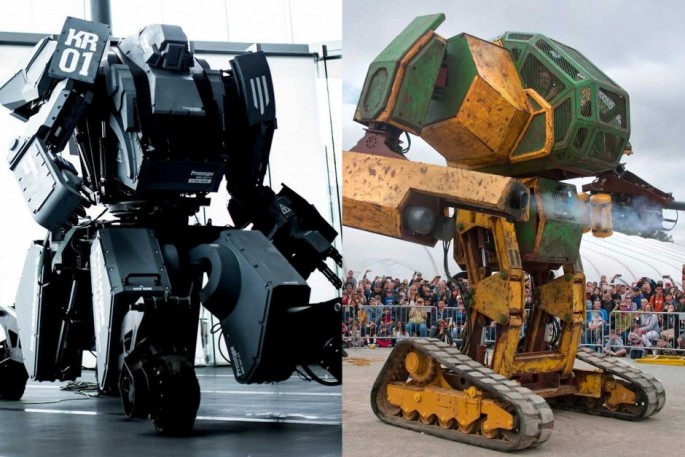A United States robotics company recently challenged a Japanese firm to a giant robot battle between the two nations, followed by the latter adding a new weapon and suggesting hand-to-hand combat. The U.S. has now started a $500,000 Kickstarter campaign so an upgraded propulsion system will help its robot to throw punches instead of fire paintballs, to combat the Japanese machine's Gatling guns.
MegaBots is the U.S. robot manufacturer, and Suidobashi Heavy Industry is the Japanese robotics company. The Kickstarter video was posted on August 18, Tuesday.
In the clip it is explained that the MegaBots Mark 2 needs a better propulsion system for more speed, upgraded armor for defense, and a sleek Iron Man-like paint job. It will fight the Japanese robot Kuratas.
The U.S. company has teamed up with a Discovery "Mythbusters" star, robotics companies' heads, and a NASA robotics expert, according to CNN. Funds will also be used to test weapons, increase stability, and protect the human occupant.
Backers giving $1,000 will get to sit in the robot's gunner's seat. Meanwhile, those who pitch in $5,000 will have the chance to operate the robotic arms.
MegaBots set its $500,000 goal for 30 days. It had received about $138,000 in donations just a few hours after the campaign was launched.
The U.S. company has described its robot as America's first fully-operational "giant piloted robot." Its original version fired 3-pound (1.3-kg) paint cannonballs at over 1,000 miles per hour (160 km/hr).
Meanwhile, the Kuratas "mecha"(giant robot) is a single-pilot machine that was launched onto the market in 2012. It is equipped with Gatling guns and a head-up display (HUD). At 4.5 tons it weighs half the size of the Mark 2.
One debatable issue about the upgrades is whether they are fair. However, Japan added a new melee (hand-to-hand) weapon when it accepted the challenge, and the U.S. has stated that any changes to make the machines "combat ready" were permissible, according to Forbes.
Both countries will have one year to upgrade and tweak their androids before the robot war.



























